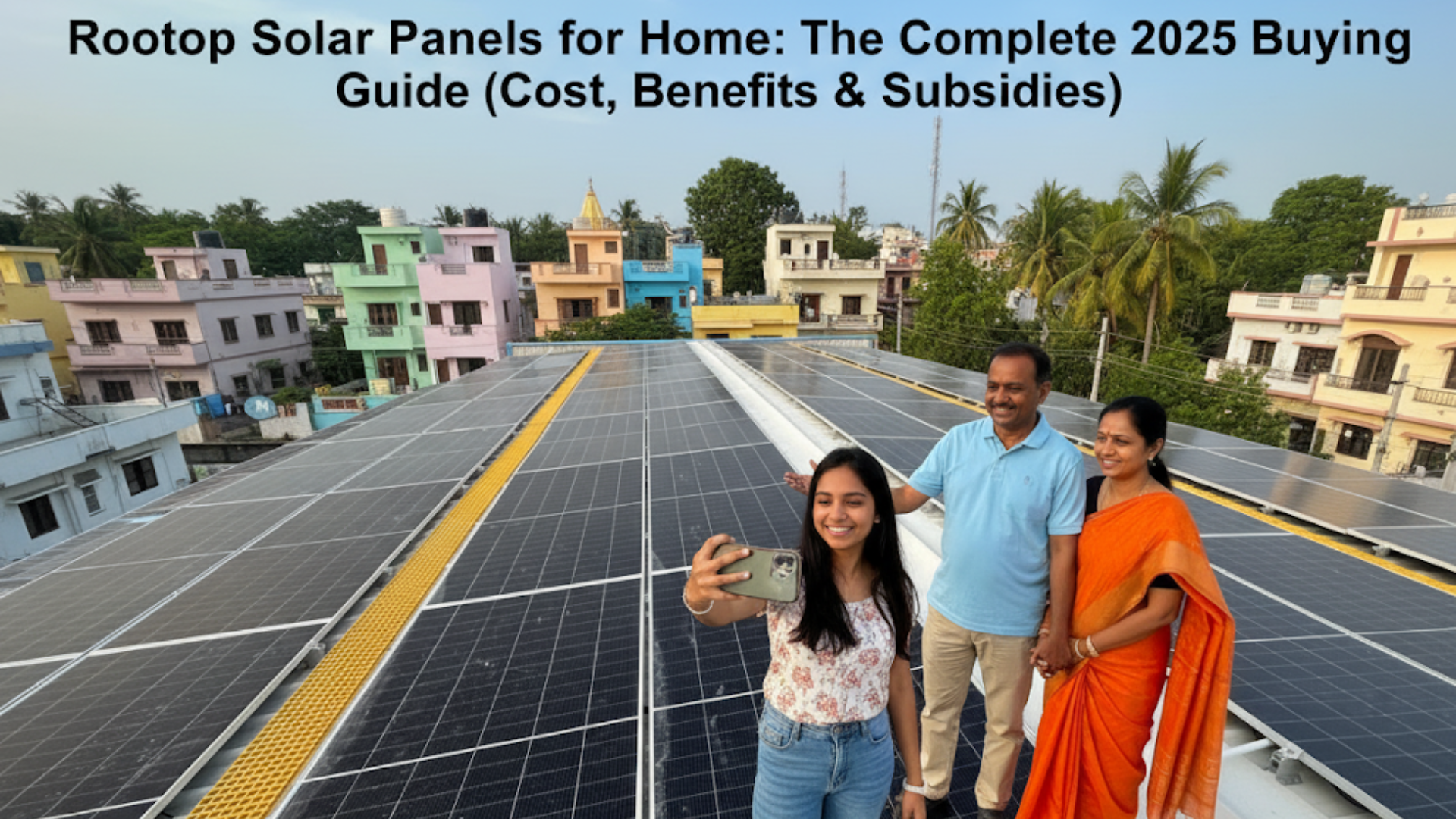Tired of ever-increasing electricity bills and unpredictable power cuts? Perhaps you’re looking for a smart investment that not only saves you money but also contributes to a healthier planet. If so, installing rooftop solar panels for home is the ultimate solution.
Significantly, in 2025, thanks to new government initiatives and a sharp decline in component costs, going solar has never been easier or more affordable. Therefore, this comprehensive guide will walk you through how to choose the right system, what the current costs are, the financial benefits you can expect, and how to maximize government subsidies.
Why 2025 is the Prime Time to Install Rooftop Solar Panels for Home
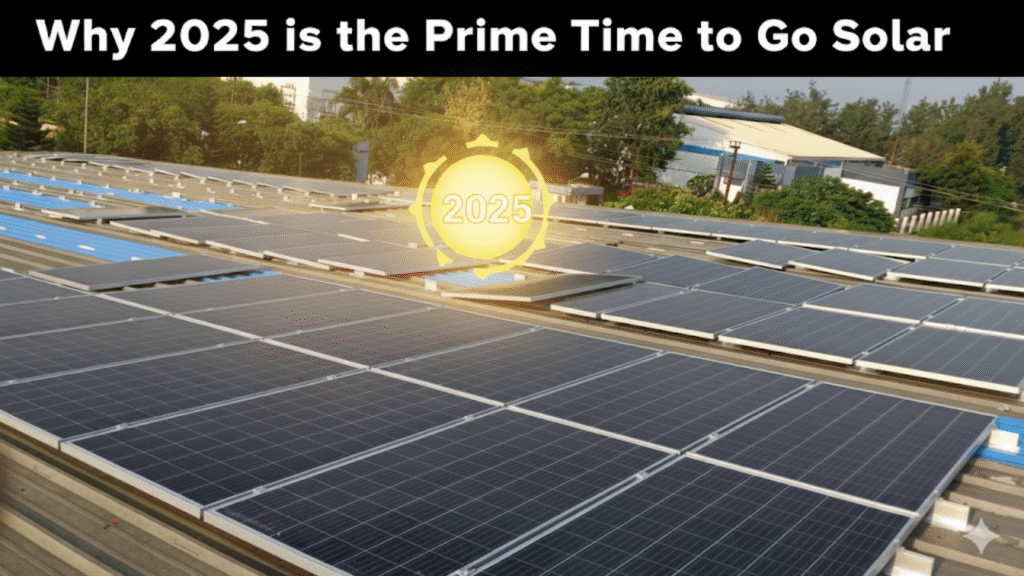
The shift to solar energy is no longer a future concept—it’s today’s reality. Several factors make 2025 the most opportune moment for homeowners to install a system.
The Top 3 Reasons to Install Solar Now
- Achieve Energy Freedom: By generating your own electricity, you drastically reduce your reliance on the utility grid. This means your monthly electricity bill can drop to nearly zero or even result in a credit due to excess power generation.
- Massive Government Support: Flagship schemes like the PM Surya Ghar: Muft Bijli Yojana (in India) heavily subsidize the initial upfront cost. This directly makes the payback period shorter than ever before.
- Protection Against Rising Tariffs: Utility rates are volatile and consistently on the rise. Once you invest, you lock in your electricity cost for the next 25+ years, essentially getting free power after the system pays for itself.
Rooftop Solar Panels for Home Cost in 2025: Detailed Breakdown
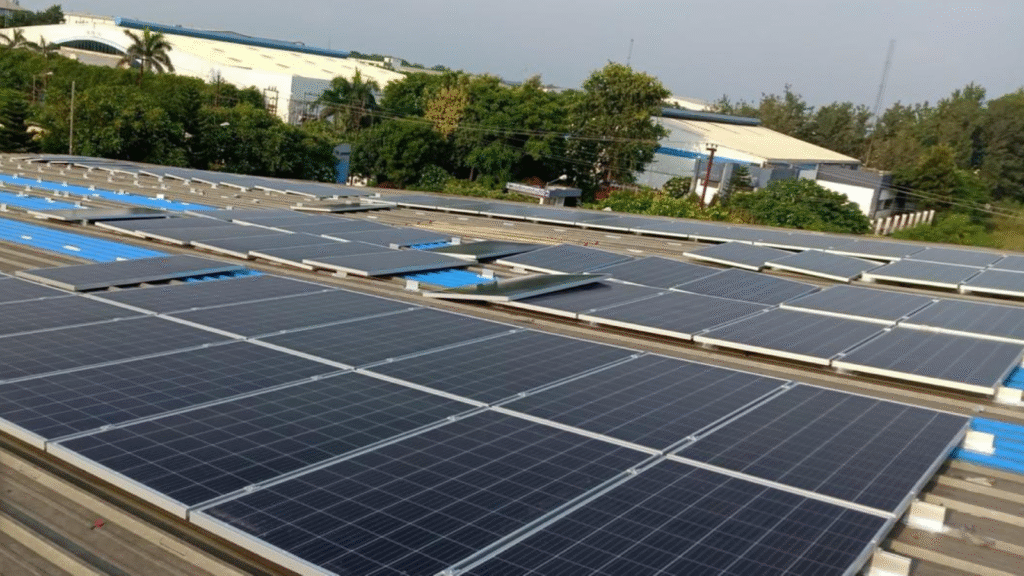
The total cost of rooftop solar panels for home depends mainly on the system capacity you need (measured in kilowatts or kW), the type of panels, and the complexity of the installation.
1. System Size and Estimated Cost (Before Subsidies)
Most residential homes typically require a system between 3 kW and 10 kW. Here is an estimated cost range for popular system sizes in 2025:
| System Size (kW) | Average Cost (Before Subsidy) | Approx. Monthly Generation (Units) | Payback Period (with Subsidy) |
| 3 kW | ₹1,80,000 – ₹2,25,000 | 360−450 | 4 to 5 Years |
| 5 kW | ₹3,00,000–₹3,75,000 | 600−750 | 5 to 6 Years |
| 10 kW | ₹6,00,000–₹7,50,000 | 1200−1500 | 6 to 7 Years |
Note: Costs are estimates and can vary based on the quality of components (Tier-1 brands are recommended) and regional labor rates.
2. Key Components of the Total Cost
The system cost is typically broken down into these major parts:
- Solar Panels (PV Modules): The largest component, accounting for 18-20% of the cost. Monocrystalline panels offer the best efficiency.
- Inverter: Converts DC power to usable AC power. Costs are around 10-15%.
- Mounting Structure & Wiring: The frame that holds the panels and all necessary electrical conduits.
- Installation Labor & Soft Costs: Includes professional installation fees, permitting, and inspections.
Government Subsidies & Financial Incentives (2025)
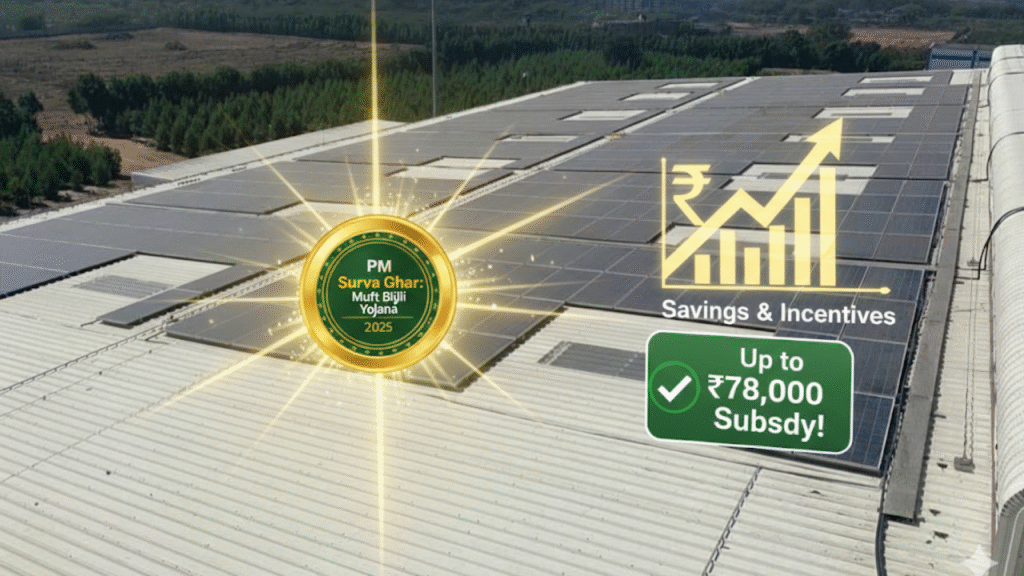
Central Financial Assistance (CFA) under PM Surya Ghar Yojana
Under this new scheme, residential consumers are eligible for a fixed subsidy amount:
| System Capacity (kW) | Fixed Central Subsidy | Maximum Subsidy |
| Up to 2 kW | ₹30,000 per kW | ₹60,000 |
| 3 kW and above | Capped at ₹78,000 | ₹78,000 |
How to Avail the Subsidy:
- Register Online: Apply through the official National Portal for Rooftop Solar.
- Choose Empanelled Vendor: Select an installer who is registered and approved under the scheme.
- Net Metering: Ensure your system is commissioned with Net Metering to qualify.
Direct Benefit Transfer (DBT): The subsidy amount is directly credited to your bank account post-inspection and commissioning.
The Long-Term Benefits of Rooftop Solar Panels
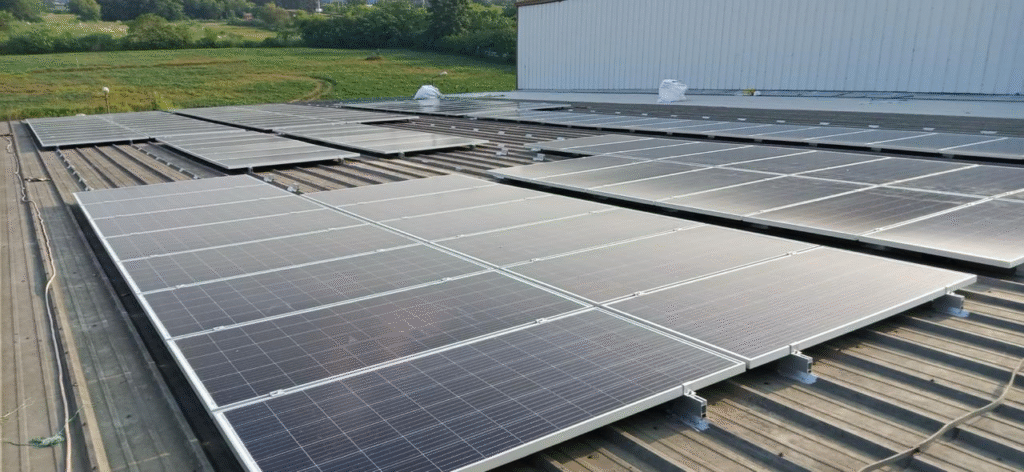
Installing solar is more than a one-time purchase; indeed and it represents a commitment to both long-term financial stability and environmental responsibility.
Key Benefits Summary
- Exceptional ROI: Your investment is typically recouped in 4 to 6 years.
- Increased Property Value: Homes with owned solar systems sell faster and at a premium.
- Energy Independence: You are insulated from future utility rate hikes.
- Tax Benefits: Apart from subsidies, check for state-specific rebates and tax exemptions.
- 25-Year Life: Solar panels come with a performance warranty of 25 years or more.
The Essential Solar Buying Checklist
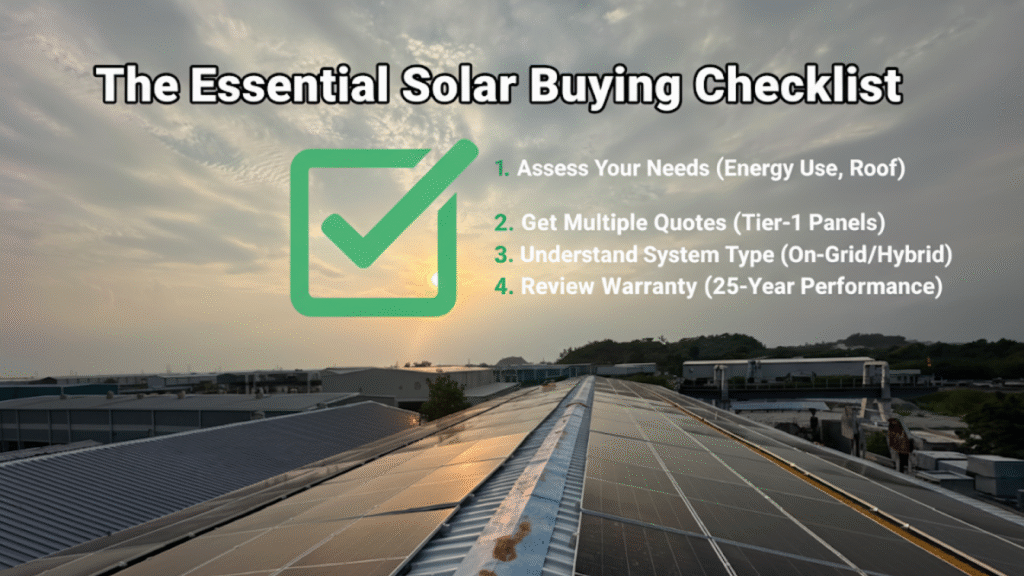
Before signing a contract, follow these crucial steps to ensure you make the best decision for your home.
Steps for a Successful Solar Installation
- Accurate Load Assessment: Analyze your last 6-12 months of electricity bills to determine the precise kW capacity you need.
- Roof Viability Check: Confirm your roof has sufficient unshaded area and is structurally sound.
- Component Selection: Insist on high-quality Tier-1 solar panels and reliable inverters.
- Installer Verification: Choose a local installer with proven experience and a strong service track record.
- Warranty Review: Scrutinize the warranty documents, especially the 25-year performance guarantee on the panels.
Frequently Asked Questions (FAQ)
Q1. What is the average lifespan of rooftop solar panels?
A.High-quality solar panels typically have an operational lifespan of 25 to 30 years. In fact, most manufacturers offer a 25-year performance warranty. This means that the panel will continue to produce at least 80% of its initial power output.
Q2. Is maintenance required for rooftop solar panels?
A. Maintenance is minimal. Generally, it involves cleaning the panels 2–4 times a year to ensure dust and dirt do not reduce efficiency. Additionally, you will need to replace the inverter, usually after 10–12 years.
Q3. Does the subsidy cover the entire cost of the solar system?
A. No, the government subsidy (CFA) covers a significant portion of the cost, up to a maximum of ₹78,000 for systems 3kW and above. The remaining amount is borne by the homeowner, making the net cost much more affordable.
